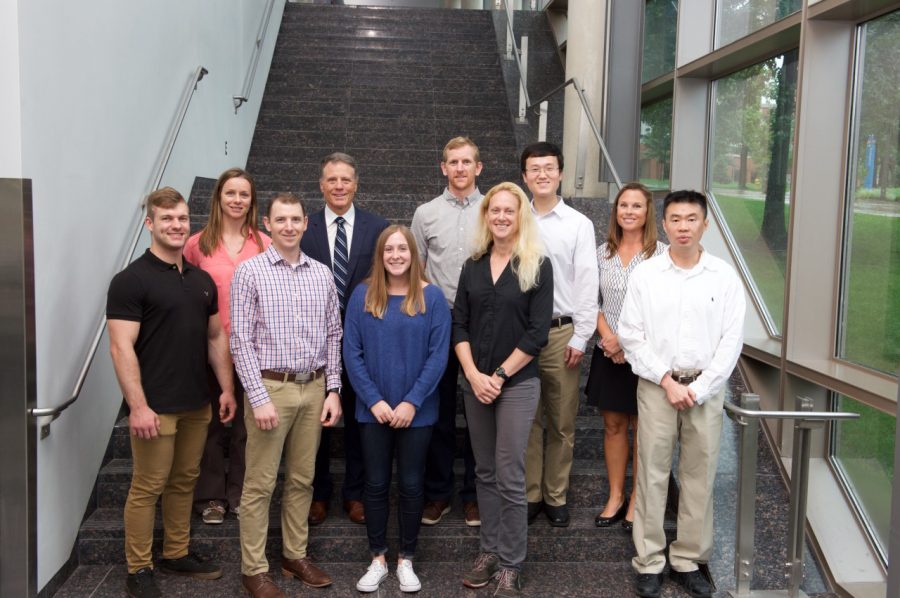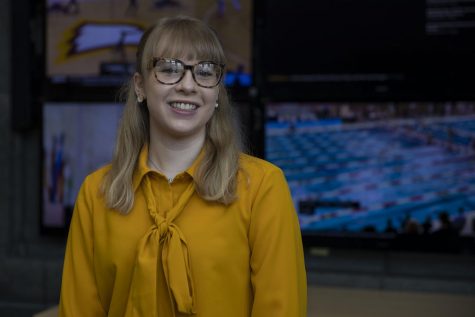UI researchers say people with spinal-cord injuries can exercise muscles by electrical stimulation
UI researchers have determined that certain genetic pathways in the human body can be activated through electrical stimulation, allowing people with spinal-cord injuries to “exercise” their muscles.
Contributed
March 3, 2020
University of Iowa researchers have discovered that the muscles of people who have suffered from spinal-cord injury can “exercise” through electrical stimulation. This discovery aims to help people with these injuries live a healthier lifestyle.
The research studied men between the ages of 18 and 24 who had a spinal-cord injury. People with spinal-cord injuries can have reduced activity and a loss of skeletal muscle, said Richard Shields, Physical Therapy and Rehabilitation Science Department chair and principle investigator for the research.
People with spinal-cord injuries are unable to use 70 to 80 percent of their muscle because they do not have a connection from their nervous system to the paralyzed muscle, Shields said. Skeletal muscle is important when it comes to metabolism and releasing substances into the bloodstream, he said.
People with such injuries can develop metabolic disease, diabetes, and accelerated aging because of the loss of skeletal muscle, he said. Shields and his team wanted to figure out how to “turn on” the muscles in a paralyzed person’s body and how they can use the genes in the muscles to improve health, he added.
Individuals involved with the study used the electrical simulator every day in a less than six-month period in a short-term duration or over six months in a long-term duration, Shields said.
RELATED: UI research team finds breakthrough in epilepsy research
“If you’re spending most of your time in the wheelchair, if we turn this on daily or five days a week, we can up-regulate the genes and actually tag some of the genes epigenetically,” Shields said. “If we can do that, that gives us some biomarkers to say we can perhaps help individuals in a wheelchair be healthier.”
UI Clinical Assistant Professor Michael Petrie, a member of Shields’ research lab, interacted with participants in the study to build the data collection, analyze the data, and then write papers and manuscripts based on the findings.
The devices that participants use are commercially available and deliver a certain amount of electrical current to a targeted muscle group at a specific frequency, Petrie said. The participants log their usage of the devices at home, he added.
“Our goal, as a lab, is to improve the health and life quality of people that had a spinal-cord injury, and so we want to develop exercise methods to promote a more healthy environment for them,” Petrie said.
RELATED: UI professor studies muscular atrophy through biotechnology firm Emmyon
Shields’ lab partnered with researchers in the UI Department of Biochemistry and Internal Medicine to conduct this work. UI internal medicine Clinical Professor Manish Suneja has worked with Shields for around 15 years to study muscular atrophy.
Suneja conducts the muscle biopsies for patients involved with the research, Suneja said, which complements Shields’ expertise in human physiology.
In this research, the pair looked at humans rather than animal models to conduct their work, Suneja said. This allowed the team to look at the molecular changes in real patients, and study factors in real time, he added.
“What is really novel about this is actually looking at the benefits of electrical stimulation at the molecular level in the muscle, and that is providing some answers, which we didn’t have previously,” Suneja said. “I think it’s going to open up the doors both to the biomarkers, and for better designed interventions.”















